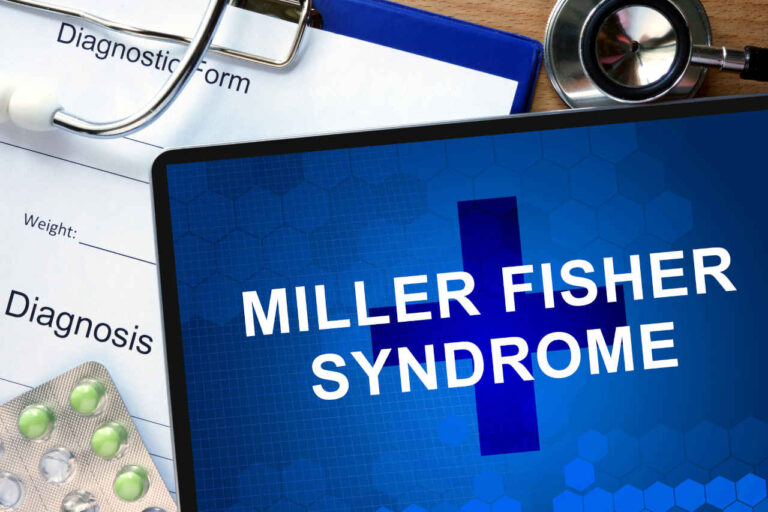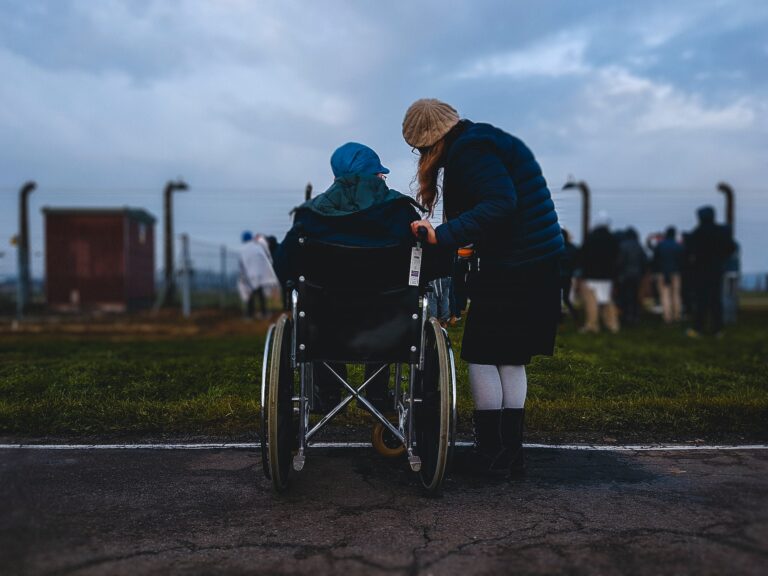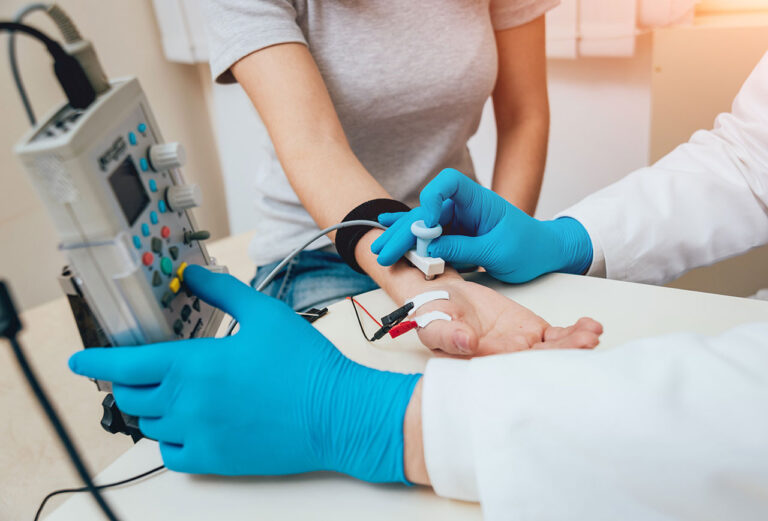
格林-巴利综合征 (GBS)和 重症肌无力 重症肌无力 (MG) 是一种神经系统自身免疫性疾病,当人体免疫系统开始攻击健康细胞(例如神经和肌肉)时就会发生。格林-巴利综合征 (GBS) 和重症肌无力 (MG) 实际上都是严重但罕见的疾病,如果不及时治疗,可能会导致严重的身体损伤,甚至危及生命的并发症。虽然这两种疾病状态有一些相似之处,例如肌肉无力和疲劳,但其潜在机制、受影响人群、症状、发病、进展和治疗方法都存在显著差异。
与专家交谈
关于共付额援助在本文中,我们将解释 GBS 和 MG 之间的主要区别,以及可用于治疗这些神经系统疾病症状的治疗方法。
格林-巴利综合征与重症肌无力:主要区别
潜在机制
格林-巴利综合征是由免疫系统攻击位于大脑外部、控制运动和感觉的周围神经引起的。免疫系统产生的抗体错误地攻击髓鞘(神经周围的保护性覆盖物)或神经纤维本身,导致神经损伤和炎症。这种损伤会干扰大脑向肌肉的信号传递,导致肌肉无力和瘫痪。
重症肌无力也是由免疫系统攻击引起的。与格林-巴利综合征不同,重症肌无力的免疫系统攻击的是神经肌肉接头,即神经细胞与肌肉的连接点。通常情况下,神经细胞会释放 乙酰胆碱 (一种神经递质)会附着于肌肉纤维上的受体。乙酰胆碱附着于受体后,肌肉收缩并产生运动。然而,重症肌无力 (MG) 患者的免疫系统会产生抗体,破坏或阻断肌肉纤维上的这些受体,阻止其接收神经信号(乙酰胆碱)。这会导致肌肉收缩受损,从而出现肌肉无力和疲劳。
格林-巴利综合征与重症肌无力的症状
格林-巴利综合征(GBS)和重症肌无力(MG)的症状差异很大。GBS的症状通常始于双脚和双腿的刺痛和麻木,逐渐蔓延至上半身和手臂。肌肉无力会迅速发展,有时甚至会影响呼吸肌,导致瘫痪,危及生命。其他早期严重症状可能包括四肢刺痛或麻木、视力问题、反射丧失以及说话、吞咽和呼吸困难。这些症状起病迅速,并在数小时或数天内恶化。
相反,重症肌无力症(MG)的症状会因肌无力的严重程度和部位而有很大差异。MG通常表现为波动性肌无力,影响可自主控制的特定肌肉。受MG严重影响的肌肉群包括:
- 控制眼球运动的眼部和眼睑肌肉。大约 50% 的重症肌无力患者会出现早期眼部症状 例如复视和一只或两只眼睑下垂(称为眼睑下垂)。
- 控制面部表情的面部和喉咙肌肉。 约有 15% 个人 重症肌无力患者最初的症状包括面部表情改变、复视、说话困难或含糊不清、咀嚼和吞咽困难。
- 颈部和四肢肌肉通常控制手臂、腿、颈部、手指和手的运动。
在某些情况下,重症肌无力症的症状可能危及生命,尤其是在影响控制呼吸的肌肉时。此外,重症肌无力症状往往会在活动时加重,在休息时改善。
易感人群
格林-巴利综合征(GBS)可影响任何人,无论年龄或性别,但在成年人和老年人群中更为常见。另一方面,重症肌无力 (MG) 可影响任何性别、种族或民族的人。它通常影响 40 岁以下的成年女性和 60 岁以上的男性。
发病和进展
格林-巴利综合征与重症肌无力的发病和进展也有所不同。格林-巴利综合征通常发病突然且迅速,并伴有 症状 症状会在2至3周内达到高峰。之后,症状开始好转。康复过程大约需要几个月甚至几年,具体取决于病情的严重程度。有些人康复后仍可能持续出现虚弱、疲劳和协调困难等症状。
相比之下,MG 的发病可能更为缓慢, 症状 重症肌无力 (MG) 的症状可能持续数周或数月。重症肌无力 (MG) 的进展难以预测,且因人而异。有些人可能出现轻微症状,可通过药物控制;而另一些人则可能出现严重症状,严重影响生活质量。在某些情况下,症状可能会在一段时间内得到缓解,但之后又会复发。然而,通过适当的治疗,大多数重症肌无力患者可以控制症状并过上正常的生活。
获得共付额援助
治疗信息 | 获得事先授权引发格林-巴利综合征和重症肌无力的因素
格林-巴利综合征的确切病因尚不清楚,但研究人员认为它是由感染或其他疾病引发的。在许多情况下,格林-巴利综合征是在呼吸道或胃肠道感染后几天或几周内发生的。
其他可能引发格林-巴利综合征的因素包括:
- 寨卡病毒和COVID-19
- 疫苗接种、手术或创伤
就 MG 而言,其确切病因尚不清楚,但据信与各种环境和遗传因素有关或由其引发。
格林-巴利综合征与重症肌无力的治疗方案
虽然格林-巴利综合征(GBS)和重症肌无力综合征(MG)无法治愈,但有效的治疗策略可以帮助改善症状,加快患者的康复时间。与上述因素一样,GBS和MG的治疗方法也有所不同。
格林-巴利综合征通常采用免疫球蛋白疗法或血浆置换进行治疗。
静脉注射免疫球蛋白治疗 这项疗法涉及将高剂量抗体注入患者血液。这种疗法有助于抑制免疫系统并减轻炎症。
- 血浆置换 这项疗法是用捐献血浆或替代品替换患者的血浆。这有助于清除攻击神经的抗体。
对于重症肌无力 (MG),通常采用药物、手术和疗法进行治疗。
- 药物 如使用乙酰胆碱酯酶抑制剂或免疫抑制药物来增强神经信号传导,减少免疫系统对神经肌肉接头的攻击。
- 血浆置换 和静脉注射免疫球蛋白疗法 可能对 MG 患者有益,因为这些疗法可以清除血液中的抗体。
- 胸腺切除术这是一种切除有问题的胸腺的手术,在重新平衡免疫系统和减轻症状方面发挥着作用。
总而言之,格林-巴利综合征和重症肌无力都是神经系统自身免疫性疾病,其症状和表现有一些相似之处。然而,这两种疾病在潜在机制、病因、肌无力模式和治疗方法等方面存在差异。了解格林-巴利综合征和重症肌无力的区别并进行早期诊断,有助于改善患者的预后。
参考:
- Leonhard, SE、Mandarakas, MR、De Assis Aquino Gondim, F.、Bateman, K.、Ferreira, MEC、Cornblath, DR、Van Doorn, PA、Dourado, ME、Hughes, R. a. C.,Islam,B.,Kusunoki,S.,Pardo,CA,Reisin,R.,Sejvar,JJ,Shahrizaila,N.,Soares,CN,Umapathi,T.,Wang,Y.,Yiu,EM,。 。 。雅各布斯,B.(2019)。吉兰-巴利综合征的十步诊断和治疗。 《自然评论神经病学》,15(11), 671–683。https://doi.org/10.1038/s41582-019-0250-9
- Dresser, L., Wlodarski, R., Rezania, K., & Soliven, B. (2021).重症肌无力:流行病学、病理生理学和临床表现.临床医学杂志,10(11), 2235. https://doi.org/10.3390/jcm10112235
- Nguyen,TP(2023 年 2 月 7 日)。 格林-巴利综合征. StatPearls – NCBI Bookshelf. https://www.ncbi.nlm.nih.gov/books/NBK532254/#:~:text=Guillain%2DBarr%C3%A9%20syndrome%20(GBS),that%20can%20progress%20to%20paralysis.
- Yuki, N., & Hartung, H. (2012).格林-巴利综合征。 新英格兰医学杂志, 366(24), 2294–2304。https://doi.org/10.1056/nejmra1114525
- Gilhus, NE、Tzartos, SJ、Evoli, A.、Palace, J.、Burns, TM 和 Verschuuren, JJ (2019)。重症肌无力。 《自然》杂志评论疾病入门, 5(1)。https://doi.org/10.1038/s41572-019-0079-y
- Freshimona, R.、Wijaya, A.、Aryatama、Djojoatmodjo, S.、Liman, J. 和 Sari, P. (2021)。P-PN018。重症肌无力与格林-巴利综合征并发:病例报告。 临床神经生理学, 132(8),e111。 https://doi.org/10.1016/j.clinph.2021.02.267
 静脉注射免疫球蛋白治疗
静脉注射免疫球蛋白治疗











